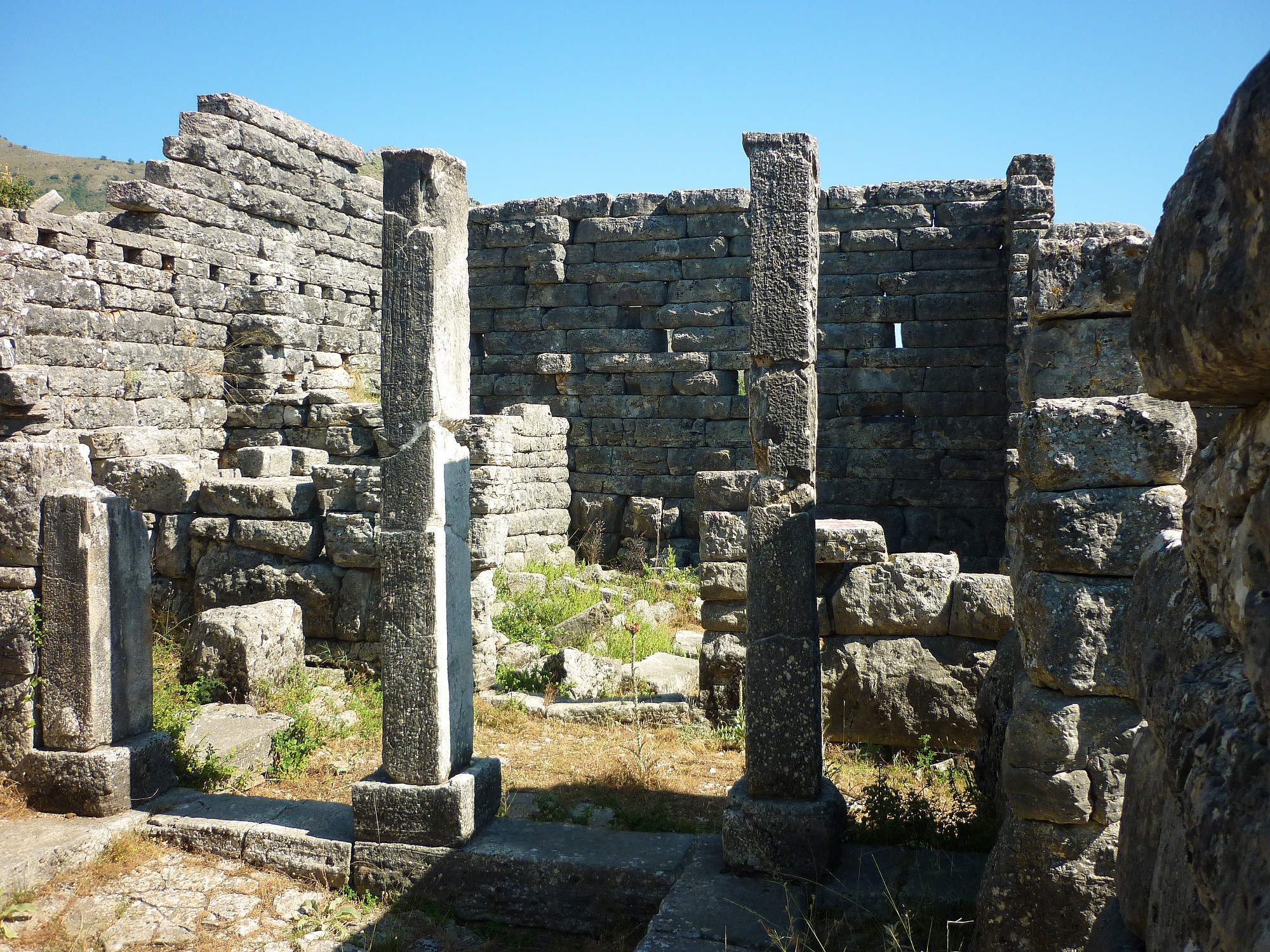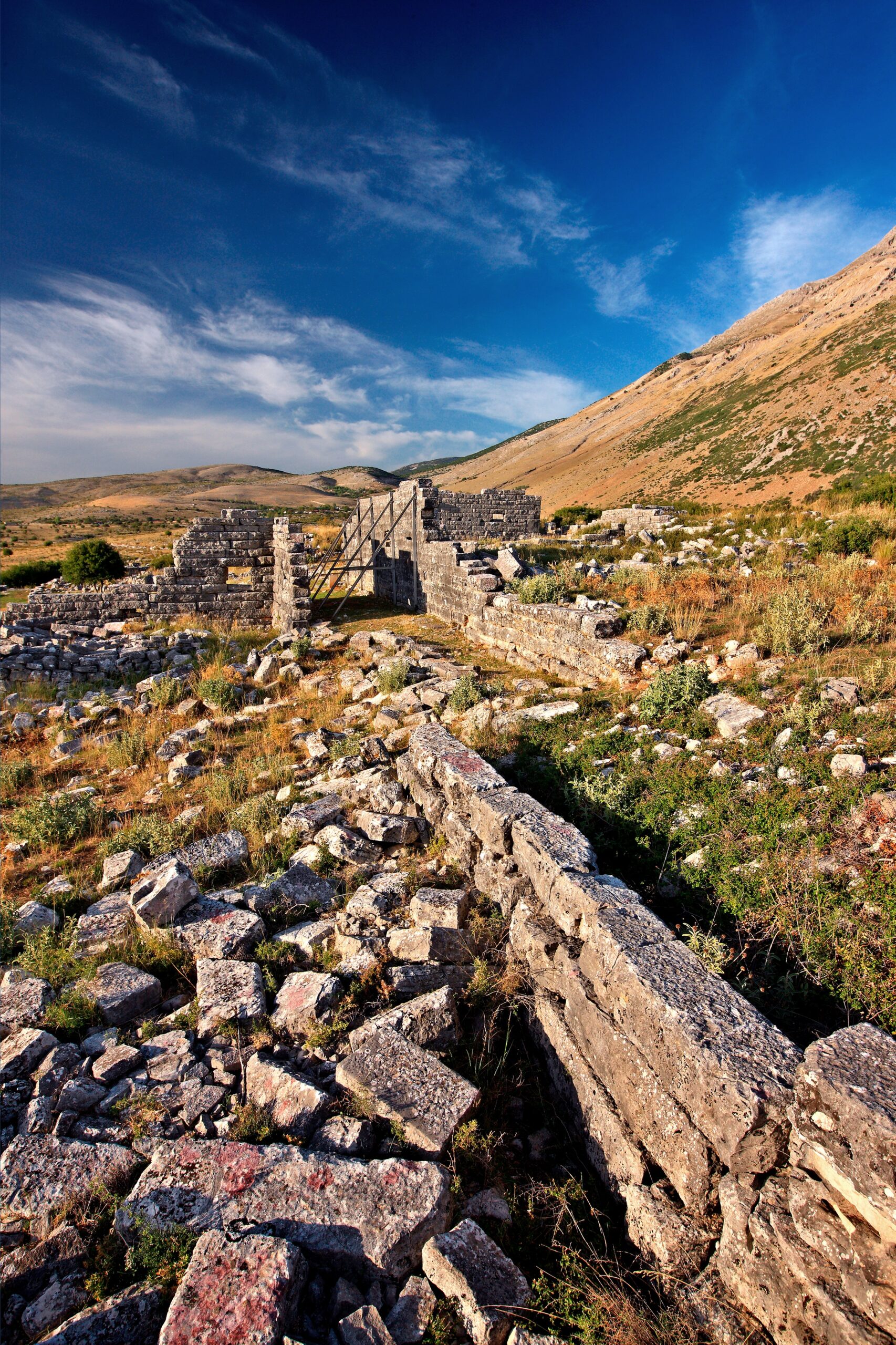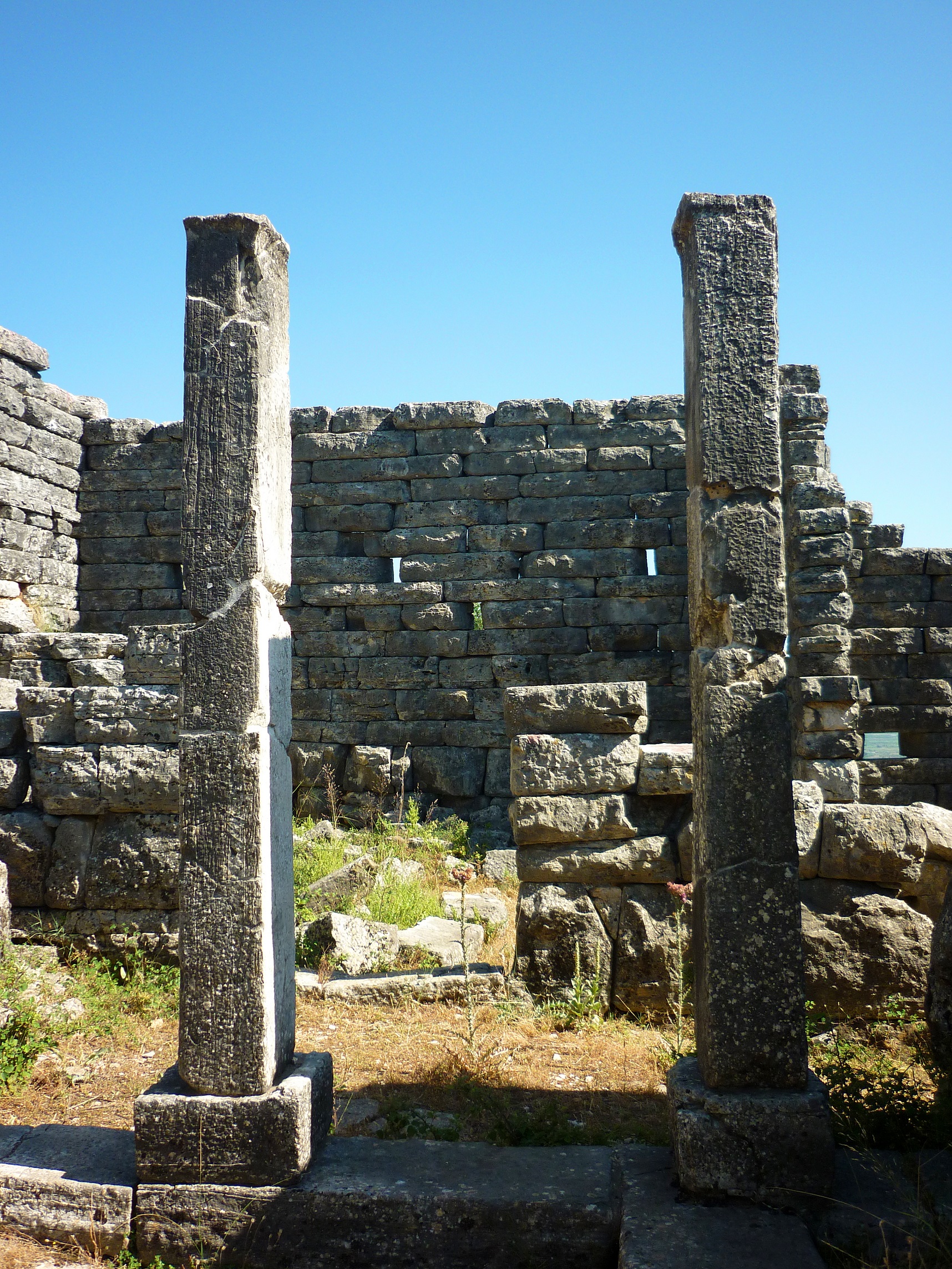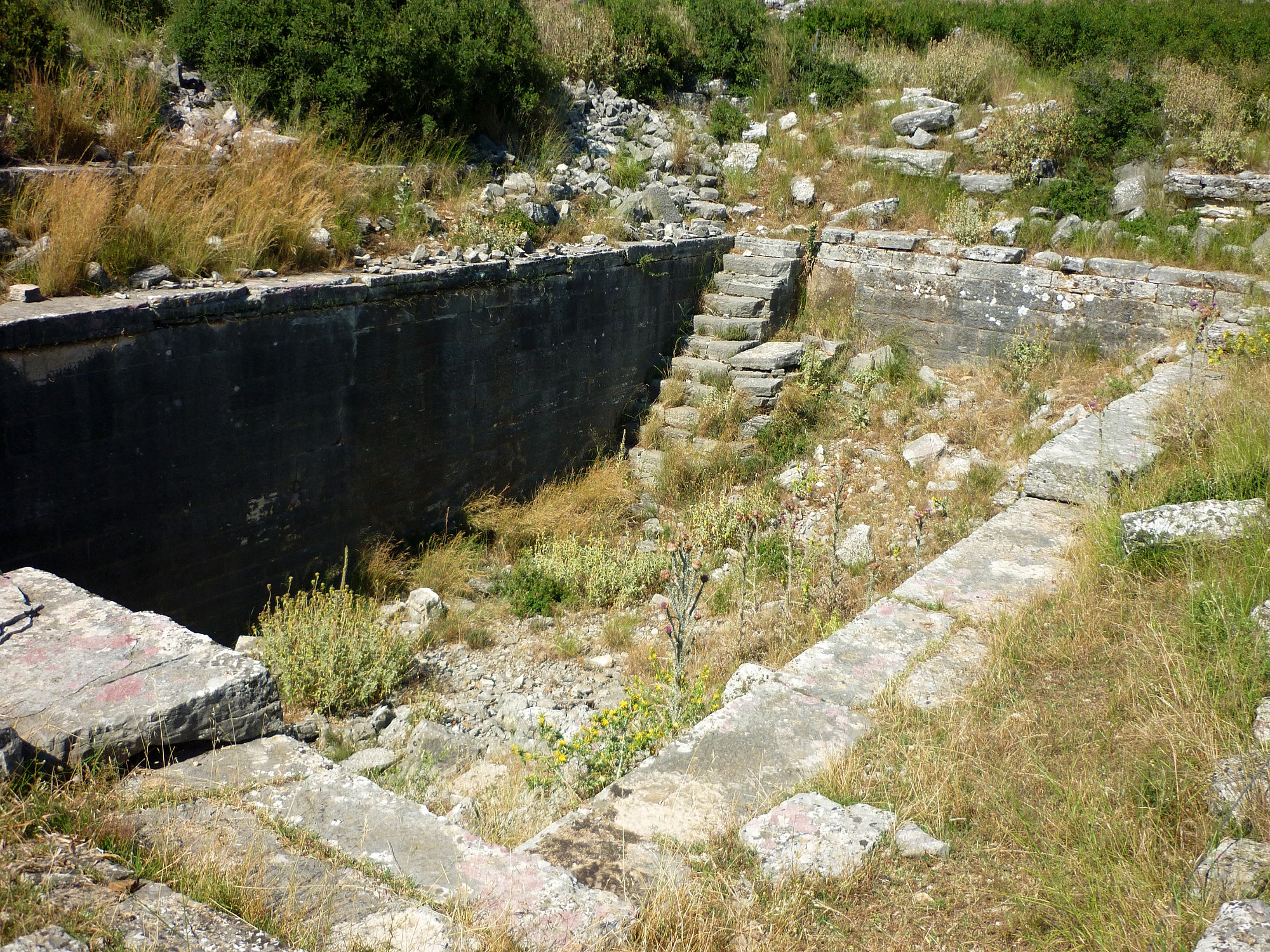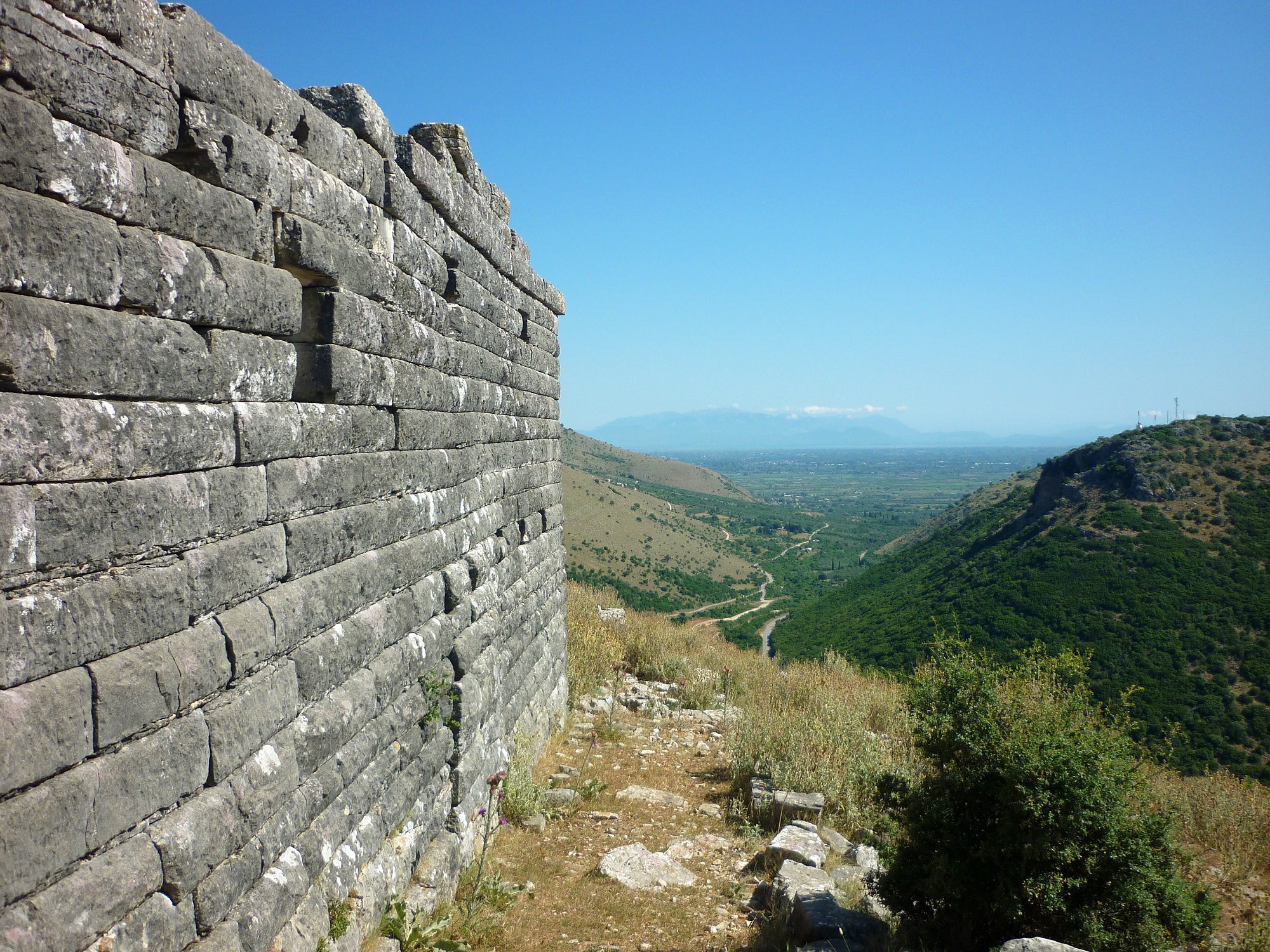Out of the innumerable ancient ruins covering most of Greece few are in a better state of preservation than Ancient Orraon. At first glance it is a typical classical Greek (4th century BC) Acropolis -Township. It is located between between Arta (ancient Amotopos) and Preveza (Gymnotops), with Mount Xerovouni silhouetted in the background.
Today one can access Orraon via the hamlet of Kastri (part of the village Gorgomilos) in the prefecture of Preveza, western Greece. This is where you’ll first spot the ancient settlement and the acropolis on top of the 345meter hill . From Kastri follow the dirt road up to Orraon.
Although the architectural remains had been ‘discovered’ as early as the 19th century, their origins were not determined until much later. The renowned English historian Nicholas Hammond (post 2nd WW) suggested they were the remains of the ancient town of Fylaki, an opinion that prevailed until archaeological research was able to identify the site as Orraon. This, after the discovery of an inscription in 1985. The Archeological site was finally opened to the public in 2005.
What is most impressive at Orraon are the excellent condition of the houses. These are constructed mainly from the local limestone and some are still have their second floor intact, a rare state of preservation for houses from antiquity in Greece. The most complete building is ‘House-D whose walls are between 5 and 7 metres high. Parts of the roof, windows and door-frames are also intact. The reason for the remarkable state that these houses are today seems to be that they were made entirely of stone, in contrast to the usual Ancient Greek practice of using stones for the foundation and lower structure and then continuing the build with mud bricks that erode over time. The dwellings of Orraon were very large and spacious, for their time. The layout included a kitchen, a bathroom, a stable and a courtyard on the ground floor, while all the bedrooms appear to be located on the second floor.
A tour of the site reveals that Orraon was a small, oval-shaped settlement surrounded by a strong double wall, reinforced with towers. It’s estimated that, at its height, it had between 1,500-2,000 residents. However, it’s possible that the population was even larger as additional buildings have been found outside the fortress. The Town plan followed a strict geometric pattern, as was common in antiquity, and the town’s administration centre seemed to have been situated on its northern side, where a roofed tank with clay waterproofing still remains today. This appears to have been the town’s main rainwater reservoir.
As Orraon was also supplied with water by a spring outside the city walls, the rain reservoir may well have been a precautionary feature in case of enemy sieges. The narrow streets and lack of communal spaces indicate that the settlement was essentially a fortress. Its strategic location meant that it controlled the only passage from the gulf of Amvrakikos into central Epirus. It’s could also be the case that the fort functioned as a trading outpost (for a period at least), as was the case with similar settlements.
Ancient sources attest that Orraon was a Molossian fortress. The Molossians were one of the better-known and written about Epirot tribes in antiquity, and even today the large and thick furred modern Molossus sheepdog breed has taken its name (maybe even retained it) from the famous dogs that the Molossians kept to guard their flocks.
The Molossians inhabited the region of Epirus at the end of the Bronze age, from1200 B.C. on. It appears they migrated down from north-western Macedonia. Initially it seems that the Molossians organised themselves in broadly tribal groups, but in 450 B.C. they entered a new phase of their history, during which they re-structured into kingdoms and started to form urban communities. These developments are linked to king Tharyps who was inspired by Athenian culture and assimilated many aspects of the Ionian Greeks into his own. It is believed that this royal lineage ran down to Alexander The Great. Tharyps was succeeded by his son Alcetas, during whose reign, around 380 B.C., Orraon was found.
When the Romans reached Epirus, in 169 B.C., most of its inhabitants surrendered to the legions of Anicius Gallus. Four cities however closed their gates and decided to resist; Orraon was one of them. The Romans besieged the town, conquered it and the sacked the fortress. Some of the residents continued to live there but as Roman subjects until it was finally abandoned in 31 B.C., when the last of the inhabitants migrated to the newly-founded city of Nicopolis nearby.
Read also:
Ancient Agora – Pnyx – Kerameikos: Three archaeological sites combining walking with history
Tour of Aegina, Greece – Neoclassical buildings, pistachios and archaeological sites
Ramnous and Brauron: Two archaeological gems on the coast of Attica



